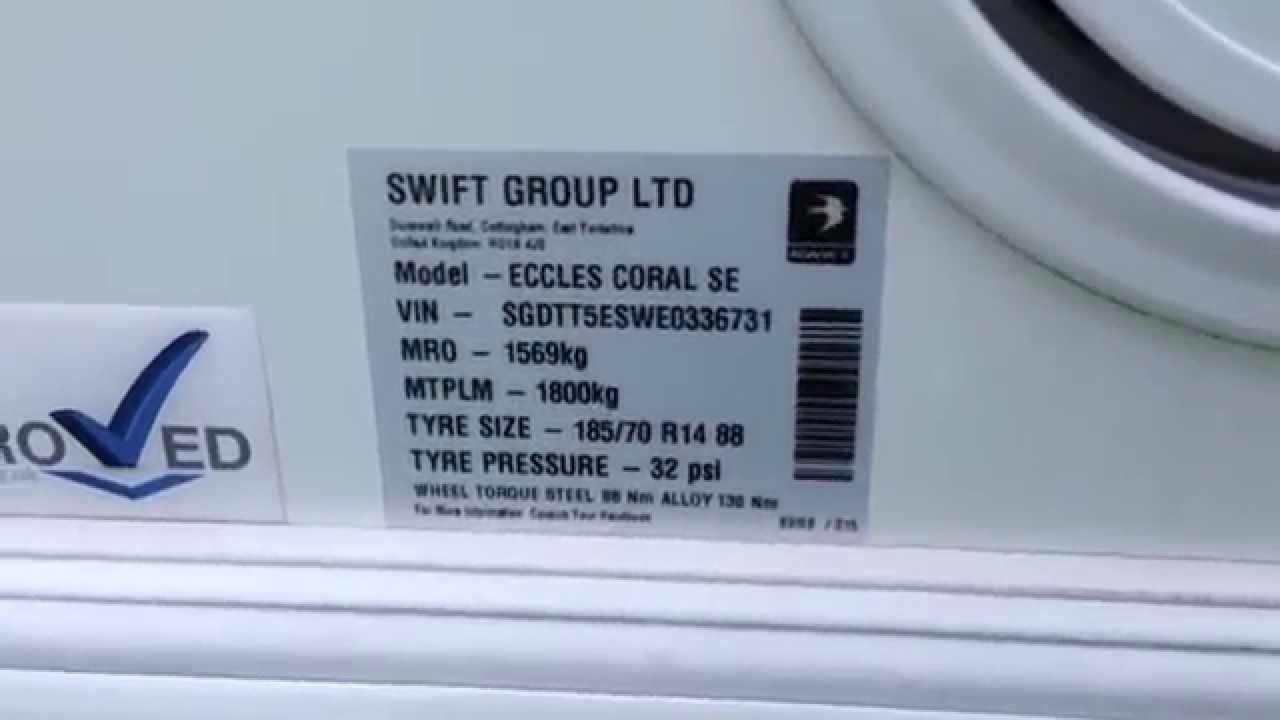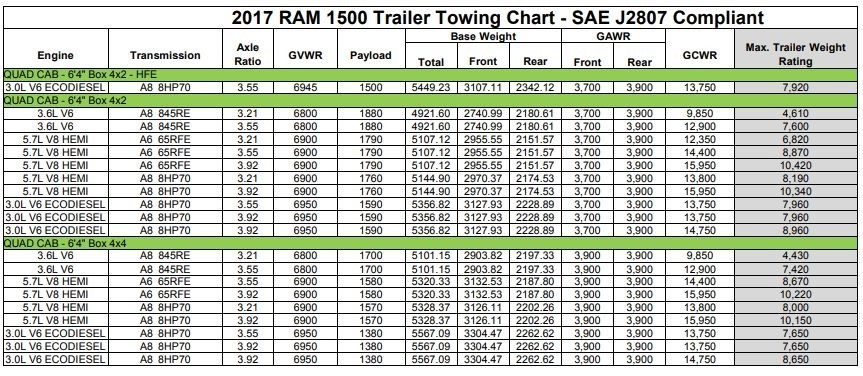Your Trailer Weight
- Get manufacturer dry weight - should be listed on Vehicle Identification Number label (usually on exterior of trailer near front) or in brochure or owners manual
- Dry weight is weight of trailer without anything in it - no water, waste, or anything other than how it came from the factory
- Add weight of water, waste, or any belongings you plan to travel with
- Once you have added the water, waste, or any belongings, add a few hundred pounds as a buffer and use this number as the total weight you need to tow
- General rule of thumb is to add 1500 lbs to the dry weight to get the trailer weight you will probably tow with, this is just a rule of thumb though

Your Vehicle's Towing Capacity
- You must find out your vehicle’s Gross Combined Vehicle Weight Rating (GCVWR) - This is different than the Gross Vehicle Weight Rating (GVWR) in that it is the maximum safe weight of your combined vehicle and trailer. This weight includes all people, luggage, and other material. If your combined towing setup exceeds this weight, your vehicle's engine, transmission, brakes, and so on will be stressed beyond their design limits.
- You can find charts for this on most manufacturer websites and make sure you find the GCVWR for your specific vehicle’s configuration - 4X4 vs 4x2, engine size, number of cylinders, transmission, cab size, axle ratio, trim level, etc.
- Once you have this number, you will need to find the Gross Vehicle Weight (GVW) of your vehicle (not to be confused with Gross Vehicle Weight Rating).
- Once you have the Gross vehicle weight, add the weight of any passengers or belongings you will be travelling with plus a buffer of a few hundred pounds and this will be the weight of your vehicle
- Now all you have to do is add the total weight of the vehicle to the total weight of the trailer including the passengers, belongings, water, and waste.
- Make sure this number is less than the Gross Combined Vehicle Weight Rating and if it is lower than the GCVWR, you are good to go.
- To determine how heavy of a trailer you can tow, you simply subtract the weight of your vehicle (including all passengers and belongings) from the GCVWR

Tongue Weight
- To throw a wrench in things, you must also consider tongue weight
- Tongue weight is simply the downward force that the tongue of the trailer exerts on the hitch that is connected to the vehicle. Too little tongue weight can cause the back end of the vehicle to lift which can result in a very dangerous condition known as trailer sway. On the other hand, too much tongue weight can cause the back end of the vehicle to sag which negatively affects the handling of the vehicle, the visibility of the driver, and the effectiveness of the vehicle’s brakes.
- The tongue weight should be somewhere between 9-15% of the Gross Trailer Weight (GTW - found on your Vehicle Identification Number label found on the exterior near the front of the trailer).
- New trailers are designed to be towed off the lot as they are perfectly balanced so you do not have to worry about tongue. Once you add water, waste, or any belongings to the trailer, tongue weight must be considered
- Tongue weight can be measured using a trailer weight scale. If you do not have a trailer weight scale, try to keep the weight distributed evenly between the front and back of the trailer with slightly more weight in the front to err on the side of caution and prevent trailer sway. Do not forget to consider the effect of water and waste on the weight distribution

